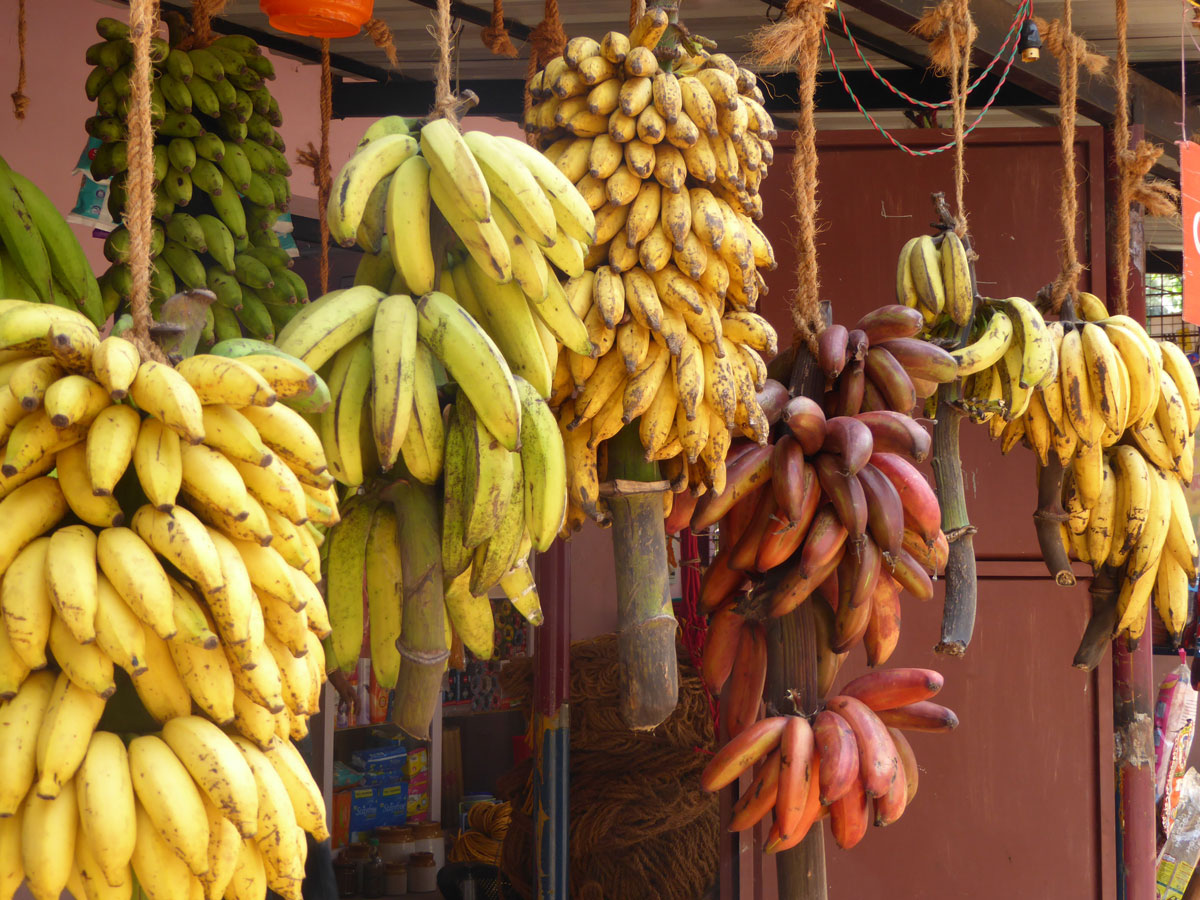
27 Jan Going Bananas
Is it the AI algorithm?
“Wow. I loved learning about bananas” was the response to a short story I had written on the Writing in Community site.
Ever since, funnily enough, I’ve noticed a steady dribble of posts on my various newsfeeds talking about bananas. If I was ten years younger and more technically naive, I might have thought it was serendipity. Instead the cynical me wonders … is it the AI algorithm listening to my searches?
So this week’s edition is a curation of a bunch of banana-inspired trivia.
- Bananas are indigenous to South India – maybe South East Asia
- How did they end up in Africa?
- Are bananas a fruit or a berry or a herb?
- How many types of bananas are there?
- Can the banana be a superfood?
It started with a writing prompt
A 10-minute writing exercise with my writing group based on a prompt:
I found myself writing a short story about a monkey stealing a bunch of bananas that Grandma was saving for a returning granddaughter.
It was inspired by the memory of eating a particular bunch of tiny fingers of bananas when I was a young girl growing up in Goa. “Stuffed full of potassium, sugar and sunshine” these little snacks – no bigger than my little finger – were quite different from the ones we buy in the supermarkets in North America these days.
As I did a bit of research for the story to find the western name of the specific variety I was referring to, I discovered a whole bunch more about bananas.
Bananas are indigenous to South-Asia
A google search for “name for bananas in Goa”, dropped me down a rabbit hole.
It brought back results of the range of bananas types grown in the sub-continent and a few facts that I thought were very interesting, including the fact that the native plant might be indigenous to my area of India.
- The wild form of the rhizome Ensete superbum grows on the bio-diverse hills of the Western Ghats (which run through Goa). I found a photo of these banana leaf shrubs growing wild on the hillside in a paper titled Banana Cultivation in South Asia and East Asia: A review of the evidence from archaeology and linguistics Dorian Q. Fuller and Marco Madella
- They are also thought to have originated in Pacific New Guinea at least 6500 years ago
Bananas are technically large berries, a herb and a fruit
Bananas (genus Musa) are technically both a fruit and a herb related to the ginger family. Even though we refer to it as a tree it is not woody but a large fibrous rhizome. Imagine a tall lemongrass shrub.
Because bananas come from one flower with one ovary, they are also technically a berry.
Follow these links if these facts fascinate you:
- Eight things you didn’t know about bananas (PBS)
- A banana plant is a herb (Garden Betty) a very interesting read
So many different kinds of bananas
Easy to grow, bananas are a nutritious staple in many cultures. There are plantains that are more fibrous and can be eaten when green. And there are bananas. It turns out there are so many more varieties than the Cavendish that we are used to seeing in the grocery stores. The mouth-watering bananas in my story were very similar to the little ones in the middle of this photo, small, very thin-skinned, bursting with flavour:
[Kerala roadside stall selling bananas, photo by Alistair Smailes on Unsplash]
Practically every Goan home has a banana grove. The most distinctive Goan version is the Moira banana – a fibre-rich, longer plantain – named for the village where it was a primary crop. I came across this interesting video with Sunanda Parsekar, a banana vendor in the Mapusa market, explaining the economics, growing pains and variety of bananas available in Goa. Turn on captions to read the interview in English, or enjoy the conversation in Konkani!
One of the many banana articles that popped into my mailbox was this interesting one about a web designer who has turned his family farm into a living library of the many varieties of banana that grow in India. (If you are into unrelated bits of trivia, I recommend signing up for the Atlas Obscura newsletter)
At This Banana Farm, the Bunches Grow in 430 Shapes and Sizes
One reader sent me her own photo with a 1000 finger banana plant taken at the botanical garden in Singapore:
What’s in a name?
I continued my search for the correct spelling of what my teenage ear colloquially remembered as “figue-de-wort” (Goa was a Portuguese colony on the Indian subcontinent). The closest I came was this passage from a Dominican Republic (DR) Guide to Cooking “Why are bananas called guineos?”
The Haitian Kreyol for banana is figue (French for ‘fig’) or figue-banan. This is a curiosity in itself – the Portuguese used to call bananas ‘garden figs’ or ‘Indian figs’ in the 16th century, coincidentally around the time they were busy introducing bananas to the West Indies.
Huh. Interesting. Maybe that is the way the banana had made its way from Asia to Africa and then across to the Caribbean?
Or maybe not …
Africans cultivated bananas 4500 years ago
A research paper cited in a 2006 article Early Africans Went Bananas reported “A team consisting of Julius Lejju of Mbarara University in Uganda, Peter Robertshaw of California State University, San Bernadino, and David Taylor of Trinity College in Dublin, Ireland suggests that the banana may have been cultivated on the African continent as early as 4500 years ago:
analyzed sediment samples from the (archealogical) site of Munsa, about 125 kilometers northwest of Kampala. Earlier excavations at Munsa led by Robertshaw had shown that the site was first occupied by large numbers of people about 1000 year ago. Yet radiocarbon dating of the samples indicated occupation up to 4500 years ago. Fossil plant fragments, called phytoliths, of the banana genus Musa are present in these earliest levels, the team reports this month in the Journal of Archaeological Science.
Moreover, the researchers argue that recent work by an Australian team indicating that bananas were cultivated in New Guinea at least 6500 years ago (Science, 11 July 2003, p. 189) makes the early African dates all the more plausible. And genetic evidence from other studies suggests that bananas were first introduced from New Guinea into southeast Asia. From there sea traders could have brought them to East Africa across the Indian Ocean.
More banana trivia
Another interesting banana-related article that showed up was this one from the BBC False banana: Is Ethiopia’s enset ‘wondercrop’ for climate change? discussing how a relative of the banana family could possibly provide a source of pulp for bread and porridge. Currently, it is only grown in a specific region of Ethiopia.
The fibre from some varieties of banana trees can also be used to make fabrics, paper-thin biodegradable teabags, and rope. This makes it an interesting climate-related connection to edition 18 Hope or Despair where we talked about discovering alternate food sources.
Do you now have enough random banana facts? Remember me when you win that trivia game.
My foray into the world of bananas challenged my conceptions and made me think differently about the sources of my information and how I can expand them. I’ll never look at a banana the same way again.
Now, you’re probably expecting a list of banana recipes in a post like this.
How about we crowdsource them from the Tilter community for a future newsletter? I’ll curate a list for a future edition.
- Send me your favourite banana-anything recipe: bread, pancake, smoothie.
- Send in tips on how to keep them from spoiling.
- Have you come across an unusual use for bananas – as a dish or a product?
Wow! This is edition 20 of Tilt the Future – answering when serendipity knocks. See you again next week.
Karena
PS. Dedicated to my regular writing group – The Crows.






No Comments